Husband-and-wife team David Cassells and Lucy Cant talk about the dynamics of working together, and the different strengths they bring to their design studio.

January 28th, 2016
David Cassells and Lucy Cant co-founded multidisciplinary design studio Studio Cassells – and they’re also married. The couple hails from New Zealand, where they worked on various museum spaces, as well as a set of intuitive recycling bins for offices that saw them shortlisted for New Zealand’s prestigious Best Awards 2015.
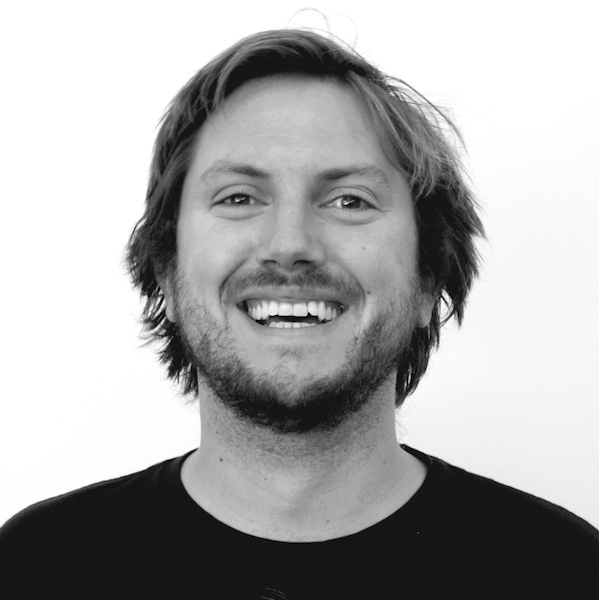
David Cassells, Co-Founder and Creative Director of Studio Cassells
After working in Shanghai, Cassells and Cant moved to Hong Kong, founding their studio here with the intention of continuing to work across disciplines. Studio Cassells is made up of an in-house team of four designers; they collaborate with designers around the world and they partner with companies such as De Vries & Partners and Story Inc. on projects for the likes of Dom Perignon and Chanel. They also work directly with brands such as leading German appliance manufacturer Miele – they recently created the temporary event space for the Miele Laundry Care Exhibition at ifc mall.
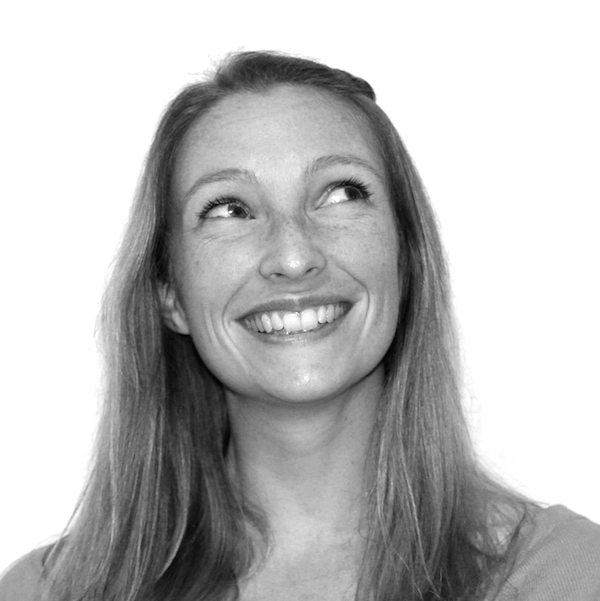
Lucy Cant, Co-Founder and Design Director of Studio Cassells
What’s the work dynamic between you two?
LC: As a studio, we come as a team, but we bring really different skills to the table. We both come from an industrial design background, but David specialised early on in spatial design and I went into research and product design. We’ve got quite diverse backgrounds in product design, event design, and workshop special effects. That’s why we work with such broad subject matter at Studio Cassells.
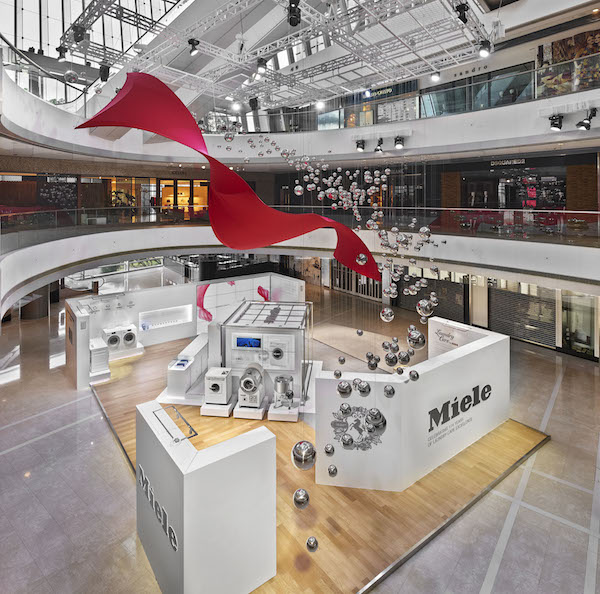
Studio Cassells recently designed Miele’s event space for an exhibition at ifc mall in October 2015
When did the romance come into play?
DC: Lucy and I met at university, but we got together later on, over a particular project [in New Zealand]. It was a really cool project I was working on for a museum. It was about trying to figure out how the Maori people got all the way from Hawaiki to New Zealand on a boat. Hawaiki is a mythical place the Maoris believe they originally came from, so we had to design something that was mythological and ethereal.
I had gotten the boat design to this hair-brained point and I was like, “Lucy, how can I make this real?” She was working for Weta [Workshop, providing design and manufacturing support for films like Lord of the Rings, Avatar, Mad Max: Fury Road and many more]. She was in the workshop side of things, running a 3D modeling department at the time. We started to get into that project, and that was it.

The mythical boat that took the Maori from Hawaiki to New Zealand, as envisaged by Cant and Cassells for Te Arawa Gallery at Rotorua Museum
You’ve worked on everything from museums and retail spaces to products and temporary event spaces. What do you like best?
DC: We both really love museum design. You get to tell a narrative, and you get to hang out with these people who are really cool and way smarter than you.
LC: With museums, we have to soak up as much as possible about a subject and then let it all loose in our design. It’s a really lovely creative process when you get given this body of content you have to get across in some way. Then you have to sit down and figure out what’s the best possible, most engaging way to tell this story? How can it be really easily understood? And how can we make it work in this space?
DC: And you’ve got all these different technologies you can feed into museum design.
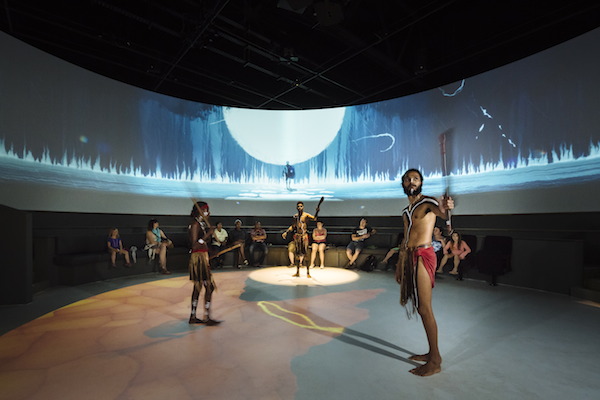
Tjapukai Aboriginal Cultural Park in Cairns. Studio Cassells created a space that allows the performers to interact with it, resulting in an immersive experience for visitors to the park
LC: We also enjoy designing for retail. That’s something we’re doing more of in Hong Kong and China. With retail, more and more people understand that the physical store is the opportunity to tell your brand story. That store is the place for you to really interact with your customers, even if they’re doing more of their shopping online. There’s such a nice crossover between this and museums, actually.
What would your dream project be, if you had no budget and no restrictions?
DC: It would be furniture. I would almost go recluse and tinker on my own elaborate furniture. I would still try to collaborate with people, but without time pressures. I’d explore new processes. Also that same approach applied to a space could be really nice as well – a space that’s fully immersive. A museum where it’s not just about creating four walls and a ceiling, it’s about doing the sculptures. I’d really like to do that with a restaurant as well. It would be a nice journey.
LC: I find it very hard to work without restrictions, full stop. I love restrictions. I like a really challenging brief, that’s what makes me tick. So I would like to get into a really grunt-y community problem, one where I had the time to do a hugely in-depth research project. So that I could further understand the root cause of the problem and go from there.

Birds flying high at the Te Ahu centre in Kaitaia, Northland, New Zealand
DC: That’s what’s quite good about us working together – it’s almost why we work together. For example, we were planning on designing a series of furniture that was flatpack-able, made of polypropylene, for Filipinos to sit on on a Sunday when they’re hanging out in Central. I was ready to get stuck in, but then Lucy said, “Wait, what does it actually mean to be a Filipino sitting there on a Sunday? You would try to spend time down there, immerse yourselves in culture, and then you’d be allowed to design.”
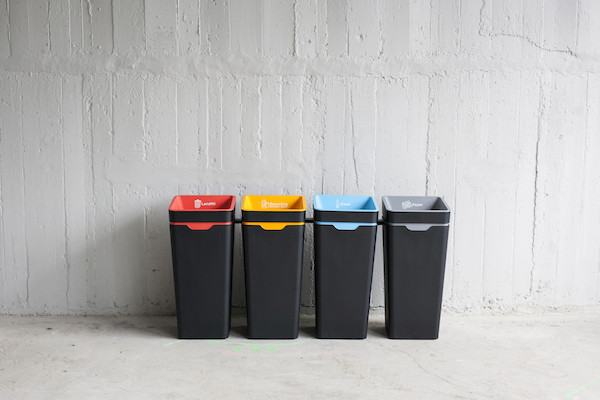
The recycling bins that saw Studio Cassells shortlisted for the Best Awards last year
LC: One of Dave’s amazing strengths is his ability to make things look beautiful.
DC: We definitely keep each other in line. It comes to a point and I’ll say, “That’s not pretty enough.” And with me, she’ll say, “That’s not functional enough.”
Studio Cassells
studiocassells.com
A searchable and comprehensive guide for specifying leading products and their suppliers
Keep up to date with the latest and greatest from our industry BFF's!

In the pursuit of an uplifting synergy between the inner world and the surrounding environment, internationally acclaimed Interior Architect and Designer Lorena Gaxiola transform the vibration of the auspicious number ‘8’ into mesmerising artistry alongside the Feltex design team, brought to you by GH Commercial.

The Sub-Zero Wolf showrooms in Sydney and Melbourne provide a creative experience unlike any other. Now showcasing all-new product ranges, the showrooms present a unique perspective on the future of kitchens, homes and lifestyles.

Marylou Cafaro’s first trendjournal sparked a powerful, decades-long movement in joinery designs and finishes which eventually saw Australian design develop its independence and characteristic style. Now, polytec offers all-new insights into the future of Australian design.

Savage Design’s approach to understanding the relationship between design concepts and user experience, particularly with metalwork, transcends traditional boundaries, blending timeless craftsmanship with digital innovation to create enduring elegance in objects, furnishings, and door furniture.
The internet never sleeps! Here's the stuff you might have missed

Paying homage to that wonderful tool of life, the book, SJK Architects’ design for the new headquarters of Penguin Random House is both a temple to the library and a captivating place to work.

Salone del Mobile 2024 is only a few weeks away, so we’re highlighting here seven special events, spaces and installations that we’re certainly planning to check out.